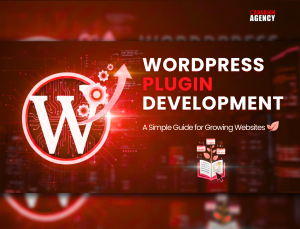Whenever you switch to the Blog section of any web and mobile app development company, you are less likely to see long-form content. You usually see a 700-word blog riddled with keywords and backlinks, and they think this will suffice. They cannot be more wrong.
According to Orbit Media’s 2021 study, the post length gradually increases yearly. Only 5% of bloggers prefer going over the 3000-word mark, with an average of 1,151 blogs per blog. Compared to 2014, it was just 800 words per blog.
Today’s content needs to be savvy with just the right information and keywords that make stuff easily searchable and satisfy the search intent. You cannot achieve it all if you do not know about larger content pieces.
What Is Long-Form Content?

Before moving forward, let’s talk about long-form content. Imagine you have a new online business you want to start, and you go online to do research. You want a detailed piece of content telling you how to achieve results. You would not like a 400-word article describing the basics of the tips you need in great detail. It is where you understand the need and nature of this new type of content generation.
On the one hand, the above description holds. But some experts believe it is not all about word count. They claim that the in-depth look into a topic is what long content should really be about, and adding many words can put off readers.
Another faction of content writers defines long-form content based on the user dwelling time. It means how long a user viewed a webpage before returning to the query page. Of course, this web page must result from a query generated by a search engine. Even though 1500 words look like long content, to this faction, the web page viewer’s decision within the 120-second mark describes it effectively.
Why Choose Long-Form Content?
Okay, so by now, you would have understood that making your content longer in length makes it rank better on Google. However, there are many reasons why someone chooses to create longer content. These include:
- More online visibility
- Proof of authority
- Industry expertise
- Community building
- User lead generation
Long-Form Content Examples
Now that you know how people describe long-form content, here is how you can create a longer piece for your blog or company website. These types of content include:
- Case studies
- White paper (a solution-based company blog, like a how-to)
- E-books
- Guides
- Year-in-Review blogs
- Brochures, etc.
Short Form Content vs. Long-Form Content
It is natural to want to have your users experience the Goldilocks moment when reading your articles or blogs: the perfect length, read time, retention period, etc. However, wishes are not what ends up happening. There are some drawbacks to excessive use of such forms of content with certain overweighing benefits to long-form content.
Benefits of Long-Form Content
- Better SEO rankings
- Opens the world of brand building
- Keeps readers’ attention for longer
- Establishes brand authority
- Makes you unique in the business
- Improved conversion rates
- More backlinks and social media shares
Benefits of Short-Form Content
- Keeps user engagement proportional throughout
- Easy to create and consume
- Scannable information; to the point data
- Pairs nicely with infographics and video marketing strategies
Logically, the benefits of one form are the drawbacks of another. And however, with long-form content, you have to go a step further. It would help if you were careful with the presentation as well. Some B2B purchasers or consumers are too busy to read lengthy pieces, which might hurt your rankings.
To combat this, stick them to your piece by adding prominent headings, subheadings, use of bold and italics, and bullets to grab attention.
Tips for Creating Long-Form Content
If you think long-form content is just writing with more words, putting in jargon, or increasing the length of the text with images or statistical nonsense, you will never get the benefits of long-form content.
It is a whole process, and there is a list of actions to perform if you plan on writing lengthy.
- Identify the audience
- Research the topic
- Optimize the first draft
Identify the Audience
We need to settle on who will read the long content we publish. Based on the nature of the material you put out there, there are going to be two kinds of consumers:
- New to the topic
- Market experts
As a general rule, keep a generic tone so that anyone can understand the basics of the concept you want to convey. Sure, you can be a little dorky or put a few jokes here and there, but the material should be more informative. The sentence structure should be rhythmic, with a step-by-step approach that anyone can follow easily.
Research the Topic
Make sure whichever topic you select, you are well-versed with it, or you can get adequate material from the internet. The best way to narrow down a topic is to focus on your company values, niche, and competition. Make sure to put an explicit declaration of why the topic of the blog or article ties to your company. Your keywords should be clearly thought-out and researched.
Optimize the First Draft
Like any other piece of writing, our desired outcome is to either inform the people or add business value to meet the goals. Lengthy content is all about explaining in detail, so do not hold back on relevant information, steps leading to a particular solution, and examples, especially if you have a mobile or web development company.
In Conclusion
Long-form content is definitely going to be the next best thing in the world of content creation, but there are benefits to short-form posts too. Ultimately, an engaging mix of longer and shorter pieces may be best to keep visitors coming back to you if you want to make excellent content. It’s not an aspect of your marketing strategy you want to take lightly.
It is true: lengthy chunks of text generate conversations, more SERPs in Google, and readership, but you have to take into account the benefits of short-form content as well. All of this can happen if you have a smart content marketing strategy.







